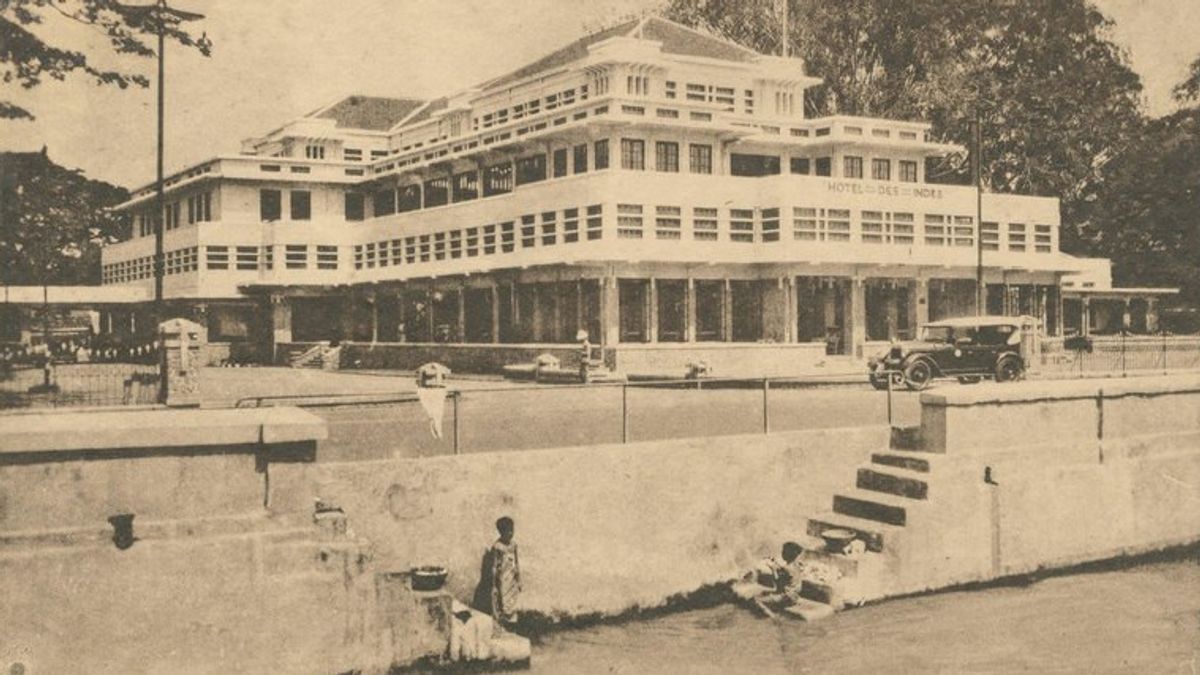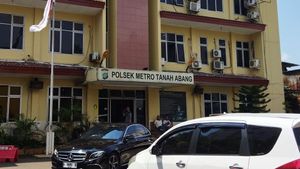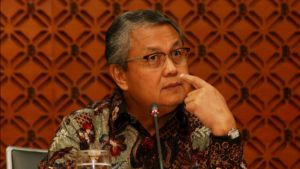JAKARTA - The city of Jakarta (Batavia) was once known as the Queen of the East. The nickname is a reflection of the success of the Dutch Trading Company VOC in building a city of incomparable beauty. However, the image of the Queen of the East was shattered instantly. Pollution and greed are the cause of the damage to the image.
Pollution (water, air, and land) occurred because the VOC only thought about profit. While the ecological aspect is ignored. Thus, Batavia was considered the source of the disease. Batavia also received a new nickname: Graveyard of the East. Twice Governor General of the VOC --1619-1623 and 1627-1629- Jan Pieterszoon Coen founded a city called Batavia in 1619.
The establishment of Batavia was carried out by Coen on the ruins of the conquered city of Jayakarta. He also forced the construction of Batavia to be similar to the city in the Netherlands. Canals to control the flow of the Ciliwung river were built. The decision in fact brought praise from various circles. Batavia was then nicknamed Koningen van het Oosten (Queen of the East).
Giving the nickname Queen of the East is not without reason. Since the beginning of its construction, Batavia has created the impression of being an elite area of the Dutch in the archipelago. Mansions and mansions sprang up on the banks of the canal. There is also Kasteel Batavia where the governor general lives.
The beautiful city planning made it possible for the elite to calmly go back and forth on the streets of Batavia. They live like a celebrity. All forms of clothing to accessories used signify the height of civilization, as well as luxury. It was this beauty that prompted many poets to describe the beauty of Batavia.

In front of the Hotel Des Indes there are still many people bathing in the river (Source: Wikimedia Commons)
“The splendor of Batavia as the seat of the VOC was appointed by Jan Harmenz de Marre (1696-1763). The content of this work is based on his experience for approximately 20 years working for the VOC and living in Batavia. The first book contains poems praising the greatness of the VOC, which is described as the Queen of the East who succeeded in bringing the coffers of money to the West and had raised the city of Batavia.”
“The second book contains poems about the journey to visit the magnificent VOC buildings in East Batavia and the graves of people who have contributed to the VOC. The third book contains poems that tell of the poet's dream to meet JP Coen who tells the origin of the city of Batavia. The fourth book contains a visit to West Batavia. In the west, there are warehouses belonging to the VOC, a fish market, a pier where VOC ships docked, an orphanage and a hospital for the Chinese,” wrote Christina Suprihatin in her article in the Discourse Journal entitled Stories from the East (2008).
Batavia then beautifies itself. The VOC intervened to build roads, churches and hospitals. As a result, the development was very tempting for every traveler who visited Batavia. Moreover, each right side is always planted by rows of beautiful trees.
They can enjoy the coolness of Batavia all morning until evening. At night, Batavia is transformed into a romantic city.
"No city is more beautiful than Batavia at night. At night young people ride boats in the canals playing music and singing," the historian François Valentijn (1666–1727) as written by Bernard HM Vlekke in the book Nusantara (1961) ).
Batavia the city of pollution
Batavia City Hall Government Center (Source: Wikimedia Commons)
The rapid development of the city of Batavia in fact gave rise to new problems in the mid-18th century. Batavia's narrative as Queen of the East is beginning to be disturbed by the presence of various kinds of pollution – from air pollution to water pollution. The prevalence of illegal logging, the emergence of various industries, and the behavior of the Batavian people who are ignorant of the environment are the causes. Gradually, the environmental pollution began to take its toll.
The presence of pollution in the middle of Batavia was closely related to the greed of the VOC in the period 1680 to 1720. The VOC at that time only thought about profit, while the ecological aspect was ignored. For the sake of profit, the VOC perpetuated massive investments in developing agricultural land, plantations, and factories. As a result, many trees are cut down for land clearing. The climate in Batavia also became unhealthy.
“The felling of trees for sugar companies and even more so for the cultivation of rice which requires irrigation, has a significant impact on rivers. Every year a group of 'Javanese mud people' are brought in from Cirebon to dredge the ditches and canals, but they are unable to withstand the silting; the coastline is rapidly shifting,” said historian Hendrik E. Niemeijer in the book Batavia of the XVII Century Colonial Society (2012).
As for the factories which became the rapid development of Batavia, it became a problem. These factories included distilleries of arak, bricks, sugar, and gunpowder. Each factory has a big share --- through its waste -- in causing pollution such as water and air.
Sugar factory for example. In the 1710s, sugar factories had sprung up in remote parts of Batavia. It was recorded that the factories on the banks of the Ciliwung River reached 16 sugar factories. On the outskirts of the Sunter River, there are 36 sugar factories. Batavia was transformed into a storehouse of disease.

The condition was made worse because of the behavior of the Dutch in Batavia who were reluctant to protect the environment. They drink and defecate by the river. The problem of littering is also incalculable. It was this combination of conditions that made the pollution in Batavia deadly. In fact, that pollution is the origin of the emergence of deadly endemic epidemics: cholera and malaria.
Each year, the two plagues claimed the lives of thousands of people. This condition forced the Dutch in Batavia to move to a place that was safer from disease. Even though many efforts to control pollution and disease outbreaks have been carried out by the VOC, many have ended in failure.
The problem of pollution and epidemics continued until the VOC went bankrupt in 1799, and was replaced by the Dutch Colonial Government in 1800. Do not think, the Dutch colonial government under the leadership of Governor General Herman Williem Daendels (1808 – 1811) took a shortcut. The city center, which was originally in Oud Batavia (Old Town), was moved by Mas Galak – Daendels' nickname – to Waltevreden (now: the area around Banten Square).
“Batavia's own conditions – its malarial swamps, densely populated parts of the city, the unhealthy lifestyle of the Dutch immigrants – coupled with cholera and mumps epidemics reduced the population within the city. The danger of death led the citizens of Batavia, with their wealth, to build villas that were wider and the air fresher outside the old residential areas. By the middle of the century, the city had expanded to the south as far as Bogor,” said Jean Gelman Taylor in the book Social Life in Batavia (2009).
*Read other information about HISTORY or read other interesting articles from Detha Arya Tifada.
Other MEMORIESThe English, Chinese, Japanese, Arabic, and French versions are automatically generated by the AI. So there may still be inaccuracies in translating, please always see Indonesian as our main language. (system supported by DigitalSiber.id)









